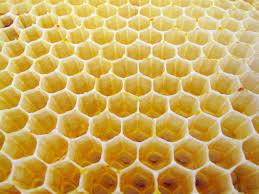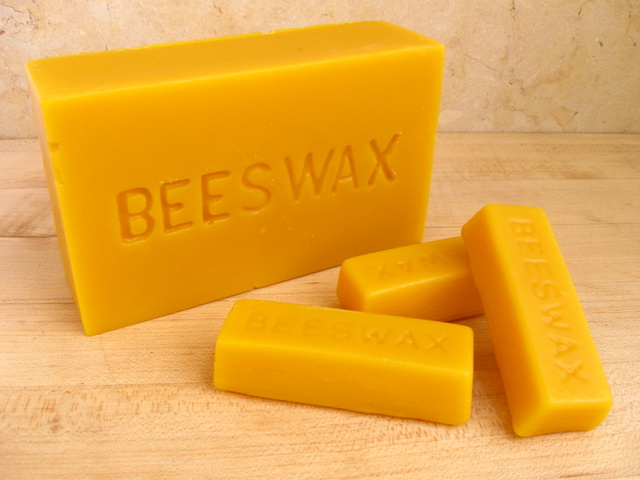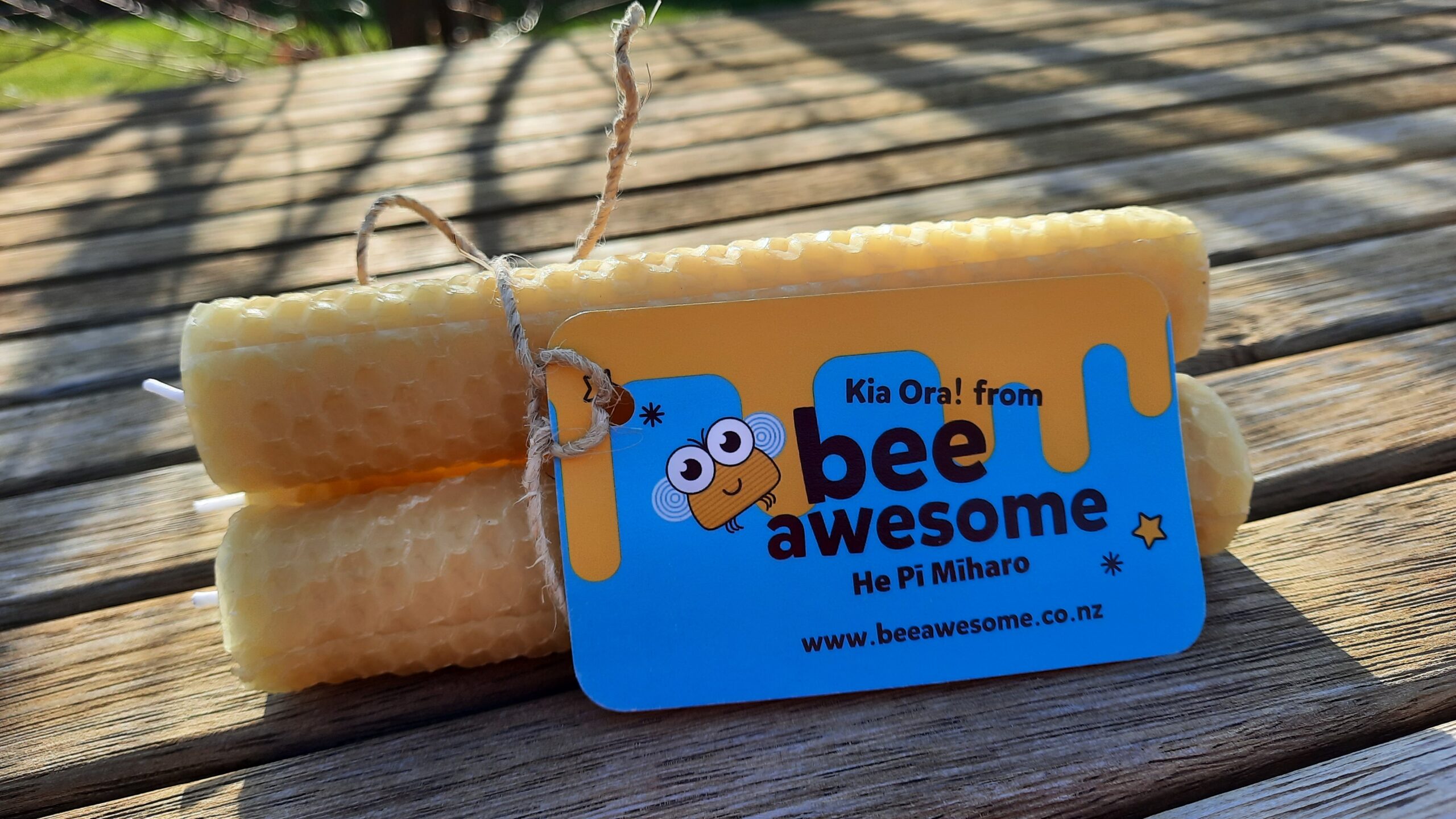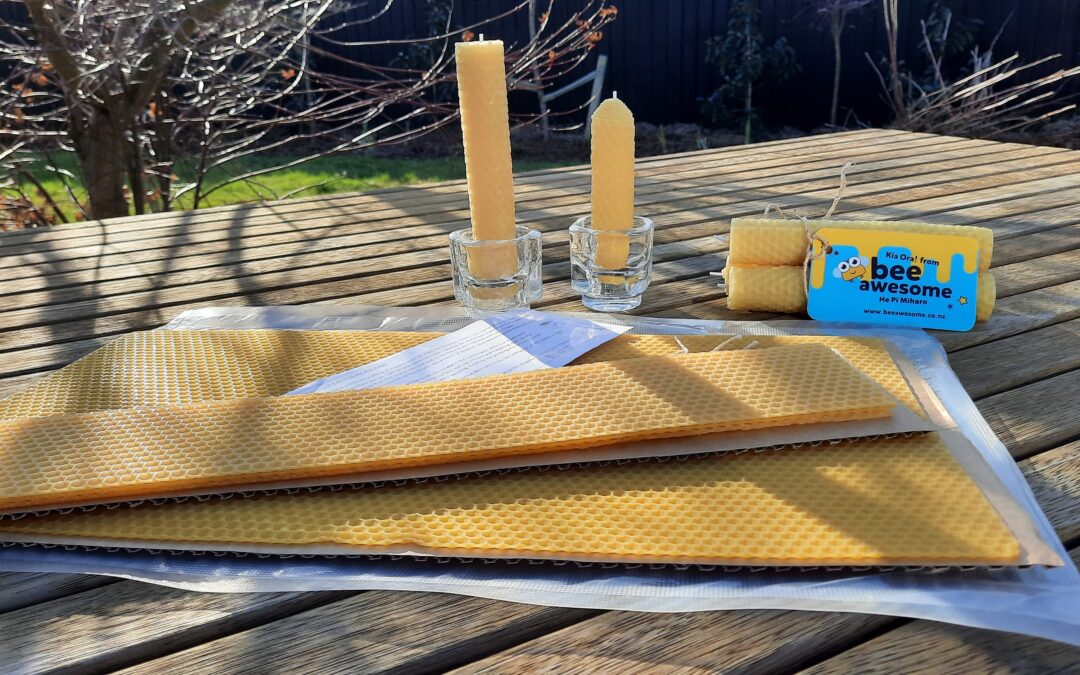Of course we all know that we get honey from our bees, but what is the other most incredible resource that we can use from our hives? Wax!
This natural wax is used to construct the honeycomb and is more valuable per kilo than what honey is but they just produce less of it.
All honey bee species have the capacity to make wax. However, worker bees (the girls) are the only members of a colony that can do this important task. Usually, these are young house bees who have not started foraging outside yet because their wings are not strong enough.

Beautiful, fresh Honeycomb.
The best wax producers are adult worker bees that are around 14 – 21 days old. The colony needs to have a lot of young adults to make the wax and a good flow of food coming in. When the colony needs more comb, young adults gorge on honey as this boost of food is needed to activate the wax glands. Worker honey bees have special glands on the underside of their abdomens. There are four pairs of glands located between the abdominal segments that can secrete wax.
The wax is first secreted in small clear pieces, which are called wax scales (flakes) and it takes a lot of scales to build sections of comb.
The workers shape the soft wax flakes into honeycomb with their mandibles (mouth parts) and their legs. This is a real community project as other colony members often help their sisters, by removing the wax scales from a neighbour’s body and chewing them into shape.
Making wax is a very time and energy consuming task so the bees need to consume a lot of food, which is brought into the hive by the older foraging worker bees. Some research states that bees must eat about 4 kilos of honey to produce ½ a kilo of wax. That is a lot! This is also why a younger colony may not produce as much honey the first season because they have spent so much energy and time building out their honeycomb. It is also why beekeepers are very careful to not damage the honeycomb when extracting the honey, so they can store it somewhere safe during the winter and give it back to the same hive next spring.

Beeswax can be rendered down into a block like this or into pellets.
Beekeepers can collect the beeswax at any time. Many of us clean off any excess amounts of wax everytime that we check our hives and when we have enough we render it down. Commercial beekeepers might extract all the wax off their Queen excluders during the winter months when they are no longer needed on the hives or if they lose a colony they might render down all of the honeycomb.

Wax on top of the Queen Excluder. Many beekeepers will scrap off this wax to render down when checking their hives.
Beeswax Colours
When fresh wax is first made by bees, it is a beautiful pristine white. This is the honeycomb you might be fortunate enough to see out in the wild. Over time, the colour of honeycomb changes, from a light yellow, to light brown and even black comb if it is left long enough. This is because honeycomb absorbs pollen oils, propolis stains and the dirt from thousands of tiny little feet.
Beeswax is used and reused in the hive as much as possible because it requires a lot of effort to produce it in the first place. For example; fresh wax is used to cap cells of ripe honey for storage; bits can be used to cap bee brood cells and old pieces can be mixed with propolis to seal cracks in the hive.

Of course us humans have many uses for beeswax too. What can you do with a little beeswax? You can make soaps, beeswax balms and pure beeswax candles too; the list is endless.
Here at Bee Awesome He Pī Mīharo we’ve made some rolled pure beeswax candles you can buy to support our hives in schools.
Or would you like to give making some candles a go yourself? Then buy a candle making kit to try at home. And we’d love to see some photos of your efforts.
What else do you like to use beeswax for? Or give us some ideas of what you’d like us to make and sell here.
Leave us a comment below

Some medium sized candles.

